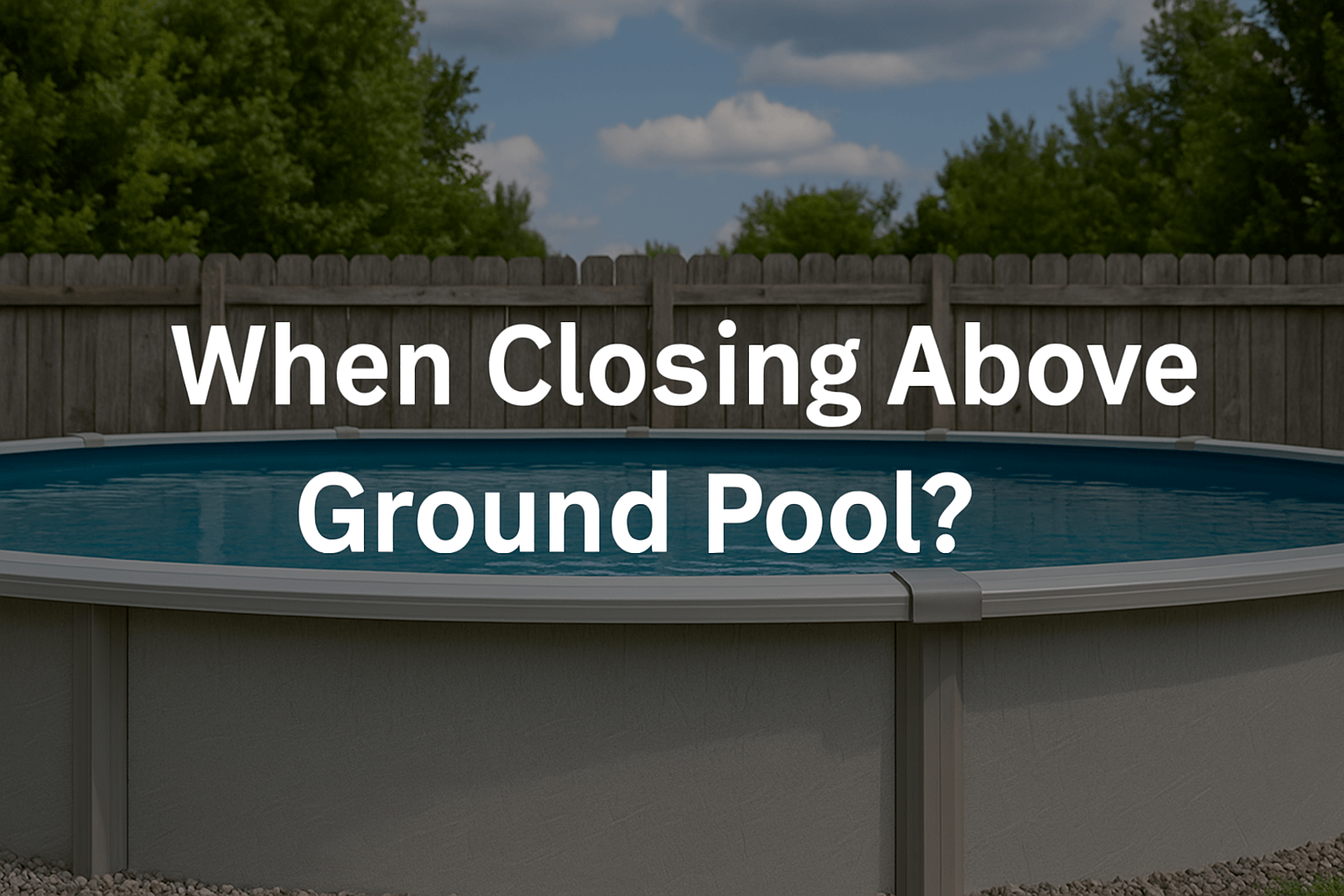
When Closing Above Ground Pool?
Think closing your above ground container pool is just about slapping on a cover and calling it a day?
Short answer: wait until the temperature drops below 10°C.
That’s the magic number.
Get the timing right, and you’ll stop algae before it starts, dodge costly winter damage, and enjoy a smooth, splash-ready opening next spring.
Let’s make sure you get it spot on.
The Ideal Water Temperature
Why waiting for the right temperature is crucial
If you shut your pool too soon—say, while the water’s still warm—you’re giving algae a cosy winter holiday.
Hold off until it’s properly chilly.
We’re talking water temps that stay under 10°C for more than just a random cold night.
This isn’t about being fussy. It’s about setting yourself up for a stress-free spring.
Colder water slows everything down, including algae and bacteria.
The risks of closing too early or too late
Close too early? You could lift that cover in April to find a swamp instead of a swimming pool.
Close too late? Frozen pipes and a damaged liner can give your bank balance a nasty shock.
The sweet spot is somewhere in between—cool enough to keep the water stable, but before frost gets a chance to bite.

Reading the Calendar and Weather
The importance of a consistent cold snap
In the UK, late September to early October is prime time for most pool owners.
But Britain’s weather has a mind of its own.
In Cornwall, you might be able to swim into October.
In the Scottish Highlands, you’ll be packing away the pool long before that.
The key? Wait for a solid week of lower temperatures before making your move.
What to do if you have an unexpected warm spell
British weather loves a plot twist.
If the mercury climbs after you’ve started closing, don’t rip the cover off in panic.
Keep it in place, but check water clarity through the season.
If it starts to cloud, top up the chemicals to keep things fresh until winter properly sets in.

The Essential Steps When Closing
Final Preparations
Cleaning and balancing chemicals
Think of this as your pool’s big clean before hibernation.
Get the net out, skim away the leaves, and give the walls a good brush.
Test the water’s pH, alkalinity, and calcium hardness, and tweak where needed.
Add your winter warriors—algaecide and stain preventer—so the water stays healthy while you’re not looking.
Lowering the water level
This one’s simple.
If you’ve got a winter cover, drop the water just below the skimmer.
No cover? Drain to the lowest safe level so ice doesn’t cause mischief.

Protecting Your Equipment
Draining pipes and disconnecting the pump
Your filter, pipes, and pump don’t appreciate frost.
Drain them fully and store smaller parts somewhere dry—your garage or shed works fine.
It’s a quick job now that saves a world of trouble later.
Securing the winter cover
Finally, fit your winter cover snugly.
Loose covers blow away or sag under snow and rain.
If you get a lot of wet weather, use a pool cover pump to stop water pooling on top.
A tight, dry cover is your best line of defence against winter damage.
Note: Always follow your specific pool manufacturer’s winterization guidelines in addition to the steps above. Different pool types and materials may require special care, and the manufacturer’s instructions will ensure you’re protecting your warranty while keeping your pool in the best condition possible.
Have you checked out our other posts?
How To Cool Above Ground Pools?
How to Winterize Above Ground Pool?
How To Drain Above Ground Pool?
How To Level An Above Ground Pool?
Should I Cover Above Ground Pool?
How Many Hours A Day Should An Above Ground Pool Run?



Leave a comment